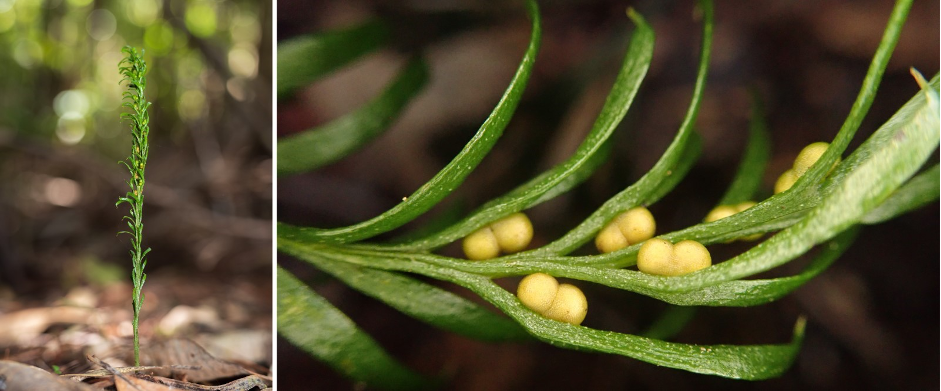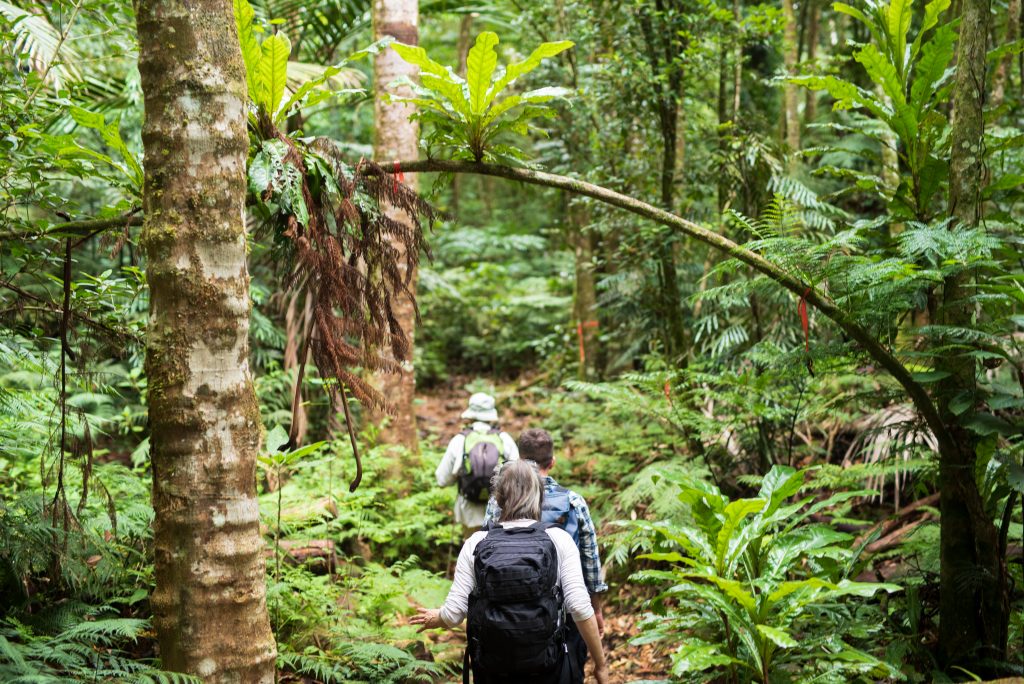The largest genome on the planet has been discovered in a fern
• Researchers have found the largest amount of DNA ever found in the cell nucleus of any organism on Earth in a plant native to New Caledonia.
• This amount, 50 times bigger than that found in humans, leads to new questions about how much DNA can be stored in cells.

Tmesipteris oblanceolata is a rare species of fern found in the archipelago of New Caledonia, a French overseas territory in the southwest Pacific, and in some of the neighbouring islands such as Vanuatu. The genus Tmesipteris itself is a group of plants consisting of about 15 species, most of which are distributed on various islands in the Pacific and Oceania. It is a unique and fascinating genus of ferns, whose ancestors evolved some 350 million years ago, long before dinosaurs walked the earth.
In 2023, a group of researchers from the Spanish National Research Council (CSIC), part of the Ministry of Science, Innovation and Universities, at the Institut Botànic de Barcelona (IBB, CSIC-CMCNB) travelled to New Caledonia to collect samples of Tmesipteris, which were subsequently analysed to estimate the size of their genomes using flow cytometry. The analyses revealed that the Tmesipteris oblanceolata species has a record genome size of 160.45 gigabases (Gb), which is approximately 7% larger than that of Paris japonica (148.89 Gb), a plant endemic to Japan that had held this record since 2010.
Considering that a base pair – the basic unit of DNA consisting of two nucleotides – is approximately 0.34 nanometres long, if we could unravel all the DNA in a single cell of this fern it would be almost as tall as, say, the Giralda tower in Seville. By comparison, the human genome, which contains approximately 3.1 Gb distributed over 23 chromosomes, has a length of DNA in each cell of only about 2 metres.
More than a decade of research on genome size
This study, published in the journal iScience and led by researchers from the Institut Botànic de Barcelona (IBB, CSIC-CMCNB) with the participation of the Real Jardín Botánico (RJB) of the CSIC, Kew Gardens, Queen Mary University of London and the New Caledonia Herbarium, is not the result of chance. In the words of Jaume Pellicer, researcher at the Institut Botànic de Barcelona: “Based on previous studies, we already anticipated the existence of giant genomes in Tmesipteris, so, this discovery, far from being a chance achievement, is the result of more than a decade of research exploring the diversity of genome sizes among plants”.
To date, scientists from around the world have studied the genome size of nearly 20,000 eukaryotic organisms, “revealing the existence of an extraordinary diversity of genome sizes along the tree of life”, adds Pellicer. Furthermore, it has been observed that this characteristic has a profound impact not only on their anatomy, as “larger genomes need larger cells to contain them, but also on how they function, evolve, and where and how they live”, says Oriane Hidalgo, researcher at the Institut Botànic de Barcelona.

“Surprisingly, a larger genome size is not necessarily reflected in a larger number of genes. Organisms with giant genomes often have an excess of so-called transposable elements. These repeated elements were first described by Dr Barbara McClintock when she analysed the chromosomes of maize, a discovery for which she received the Nobel Prize in Medicine”, says Ramón y Cajal researcher at the Real jardín Botánico of Madrid, Lisa Pokorny.
Given these observations, the question now facing researchers is why some species have such gigantic genomes and whether there is a limit to the amount of DNA an organism can hold in each cell.
“So far, only a handful of animal and plant groups have been shown to have genomes that extend beyond the 100 Gb range. Among animals, some of the largest genomes include that of the lungfish (Protopterus aethiopicus) at 129.90 Gb, and the river newt (Necturus lewisi) at 117.47 Gb. However, it is striking that six of the largest eukaryotic genomes known so far are found among plants, including, for example, the European mistletoe (Viscum album) with 100.84 Gb”, concludes Pol Fernández, researcher at IBB (CSIC-CMCNB).
Article: Pol Fernández, Rémy Amice, David Bruy, Maarten J.M. Christenhusz, Ilia J. Leitch, Andrew L. Leitch, Lisa Pokorny, Oriane Hidalgo and Jaume Pellicer. A 160 Gbp fork fern genome shatters size record for eukaryotes. iScience, 2024. DOI: 10.1016/j.isci.2024.109889
















